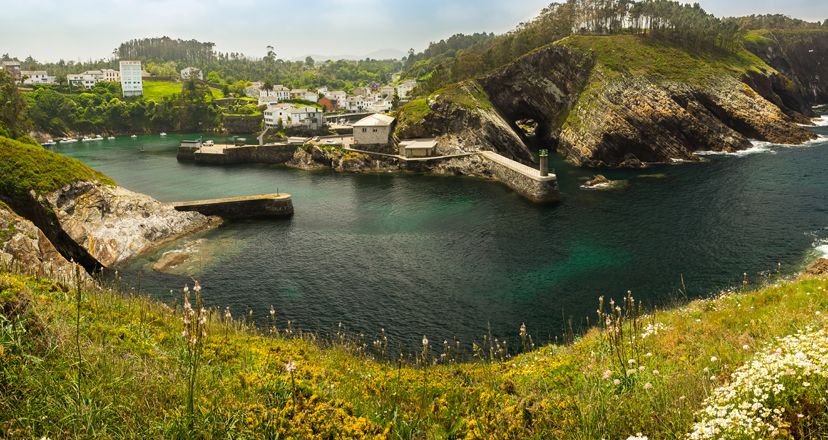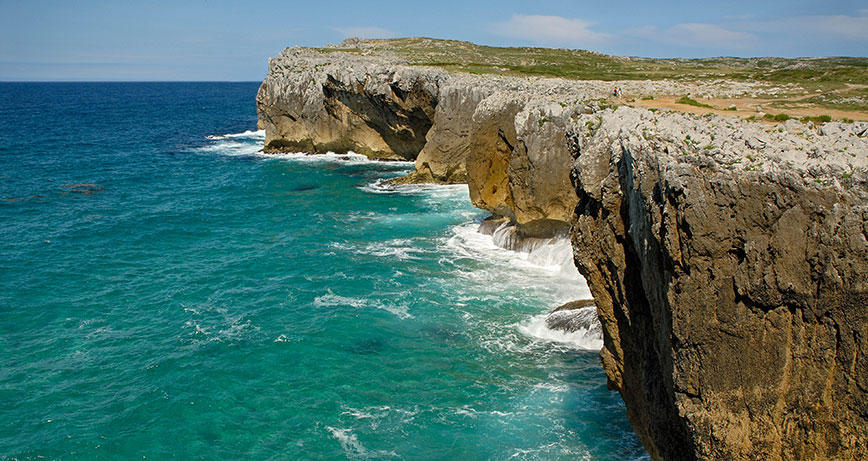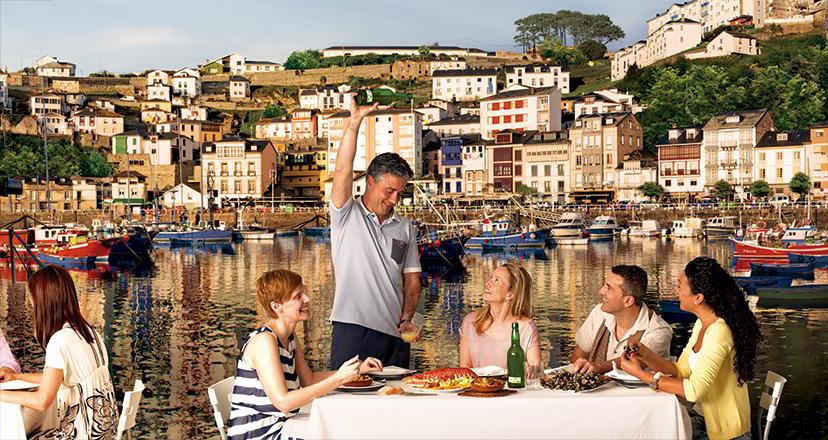Back Top 10 things to see and do in and around Luarca
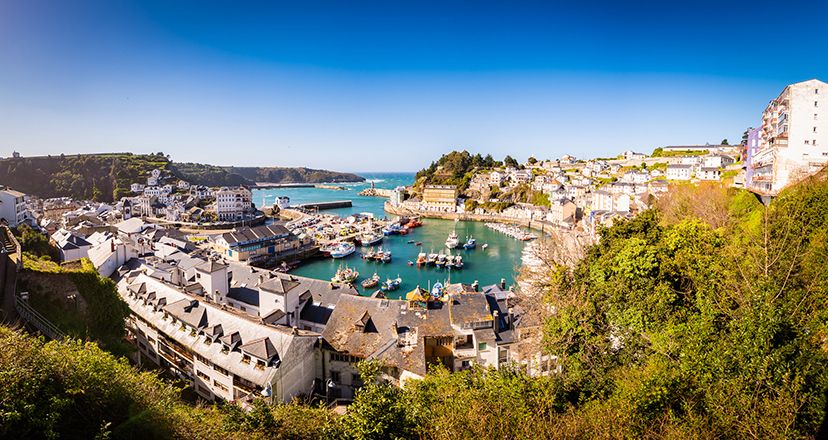
Top 10 things to see and do in and around Luarca
Luarca and the entire council of Valdés offer contrasts and cultural and tourist attractions that will leave you fascinated. For this reason, here are the 10 best things to see and do in Luarca and its surroundings!
A vast territory, that of the council of Valdés, which combines its immensity with a play of contrasts and attractions in a world of vaqueiros, sculpted between mountains, valleys and high brañas, which dream of embracing the sea, which rocks just a few kilometres away.
And Luarca/Ḷḷuarca, its capital, is a peaceful fishing village, which was an important fishing port since the Middle Ages, and which preserves many vestiges of that glorious past: old quarters, the remains of a fortress, the Mesa de Mareantes y Navegantes, bridges with legends, or palaces and emblazoned houses. As if this were not enough, it was the birthplace of the Nobel Prize winner for Medicine, Severo Ochoa, and many memories of him are preserved.
Luarca/Ḷḷuarca is so white that it does not seem Atlantic. It is also the only one in the whole of Asturias flanked by two viewpoints and two chapels: the white one, to the east, and that of San Roque to the west, and the one with the most beautiful cemetery in the whole of the Cantabrian Sea.
Of course, the surroundings of the Villa Blanca are an inexhaustible source of pleasant discoveries: one of the largest and most exotic botanical gardens in Europe; a Park halfway between the Earth and the Cosmos; a Cape where the best winds blow and the best cakes in Spain are made; an Asturian pilgrimage at the foot of a cliff, or the most beautiful beaches to enjoy unusual landscapes, dream baths or incredible waves.
Cabo Busto, wind and sweetness
Between the sun and the clouds, the wind and the calm, Cape Busto is always immense. Together with Peñes and Vidio, this promontory is one of the most salient and striking points along the Asturian coast.
Cabo Busto is one of the most impressive vantage points on the western coast. The area around the lighthouse is a large plain from which, in a panoramic sweep, you can observe the altitude of the brañas vaqueiras and the grandeur of the Bay of Biscay.
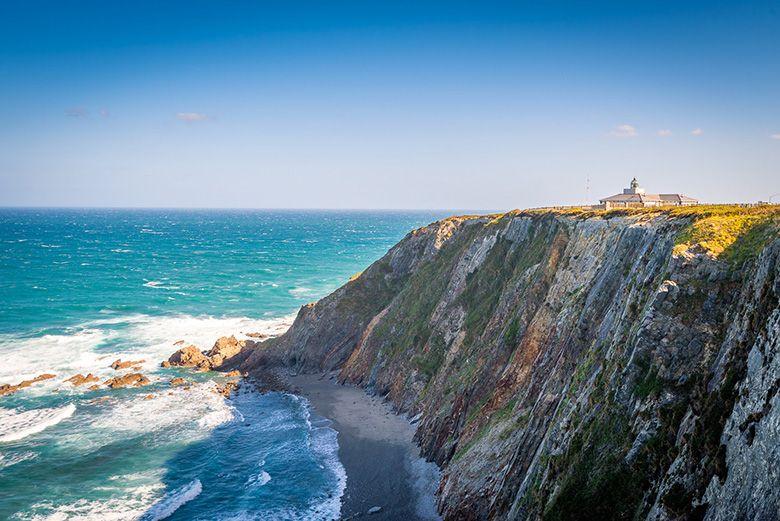
One of the best ways to enjoy and get to know the habitat of Cabo Busto is to follow the circular route along the path that exists in the area, where you will find viewpoints from which you can see the coastline, as well as cliffs, beaches and coves, which make up a rocky symphony of great beauty.
If you look out from here, on clear days, you can see the hermitage of La Blanca and the lighthouse of the town of Luarca/Ḷḷuarca, whose presence is faintly discernible amidst the murmur of the cliffs. And of course, the sunsets are so peaceful that they turn into pure poetry...
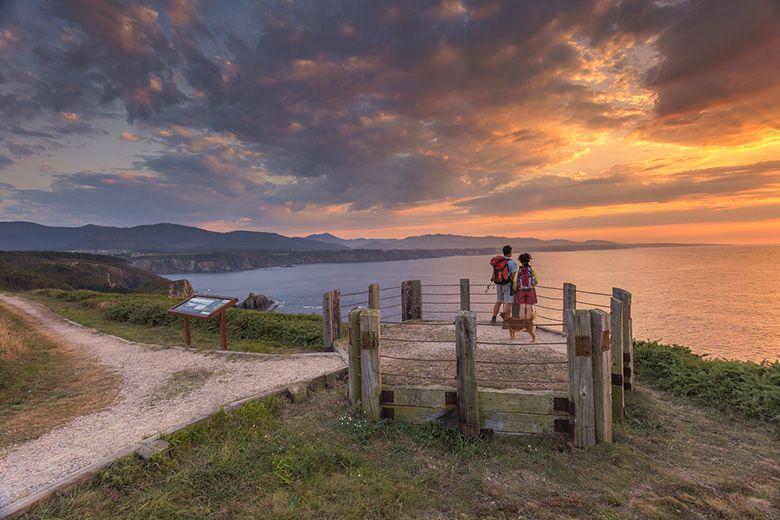
Of course, you can't leave this place without first taking a stroll around the village of Bustu, which has delightful spots that reflect the typical architecture of western Asturias, with its stone houses and characteristic black slate roofs, which can also be seen in the hórreos (granaries).
And among these delicious corners, there is one that is literally delicious: it is the bakery and the charming shop of the Cabo Busto Confectionery, considered by gastronomic critics to be one of the best in Spain, and run by Jonathan González, who has returned to his place of origin, to draw inspiration from his Cabo Busto.
The La Regalina hermitage and the most panoramic pilgrimage
One of the most beautiful villages in the council of Valdés is Cadavéu. It is well known for its Indian architecture and for its many hórreos (granaries). But what really makes it unique is its hermitage of La Regalina - which also has two hórreos (raised granaries) located nearby.

La Regalina, located in a spectacular spot by the sea, is one of the 'totemic' places on the western coast of Asturias. Thousands of travellers, pilgrims, walkers, pilgrims, writers, artists, film-makers, etc. have been captivated by this place, which has a curious history, halfway between reality and legend.
It turns out that the Virgin of Our Lady of Riégala - popularly known as La Regalina - is the patron saint of Cadavéu. According to popular legend, a peasant found the image inside a hollow trunk of a chestnut tree, located near the Riégala fountain.
And so in 1931 the chapel of Santa María de Riégala was erected, and that same year, on the initiative of Father Galo, a key figure in Asturian literature, the festivities of La Regalina began to be held in the Campo de la Garita, opposite the chapel. Every last Sunday in August, thousands of people take part in an open-air mass, accompanied by a parade of pilgrims dressed in traditional costume, who move to the rhythm of country carts and the music of bagpipes and drums. Never before has a typical Asturian festival been celebrated from such a privileged balcony overlooking the Cantabrian Sea.
La Regalina, both the place and the festival, is truly unique and unrepeatable.
The neighbourhood of El Cambaral and the most beautiful lighthouse in the world
Luarca/Ḷḷuarca forms a kind of blank amphitheatre, which gives it a sort of celestial air, although it is one of the fishing villages with the longest port and fishing tradition in the whole of the Cantabrian Sea.
On one side of this amphitheatre, the neighbourhood of El Cambaral has been growing since the Middle Ages, one of the founding plots of Luarca/Ḷḷuarca, and which to this day preserves that legendary flavour that tells us of a world of pirates, and of a place where crabs abounded.
A stroll through the asymmetrical and narrow streets of this district of Luarca is an immersion in the sea, which reaches its climax in its highest part, when the Mesa de Mareantes y Navegantes, the cemetery or the hermitage of La Blanca, also known as the hermitage of La Atalaya or the Buen Jesús Nazareno, appear before your eyes.

The Mesa de Mareantes y Navegantes is a place that was set up in memory of the old sailors and navigators who made Luarca/Ḷḷuarca an important port and a flourishing town, and was built in the mid-20th century, taking advantage of the remains of an old fortress dating from the 16th century. The colourful ceramic tile that presides over the table and recreates the characters of the seafarers' guild is a real gem, as is the ceramic sequence that recreates the history of Luarca/Ḷḷuarca.
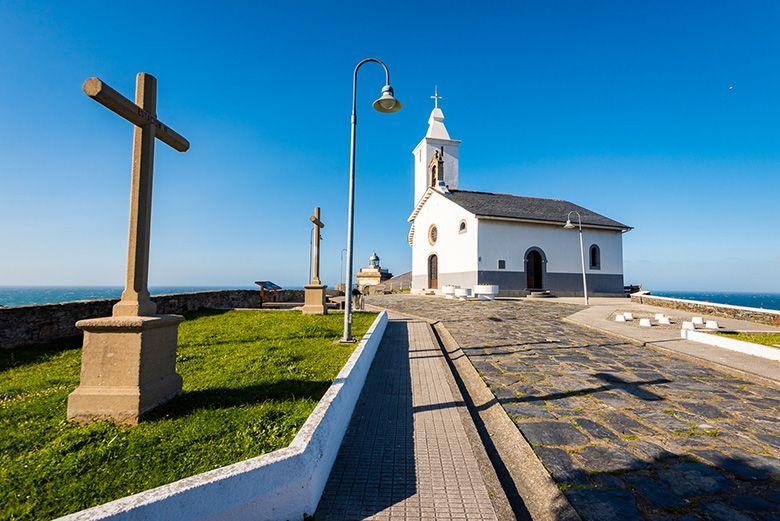
Once you have stopped at the Mesa, your destination will be the lighthouse and the Blanca hermitage, which form a harmonious and panoramic ensemble from where you can contemplate the town's famous cemetery, so white and unpolluted and facing the coast, that it is surprisingly beautiful.
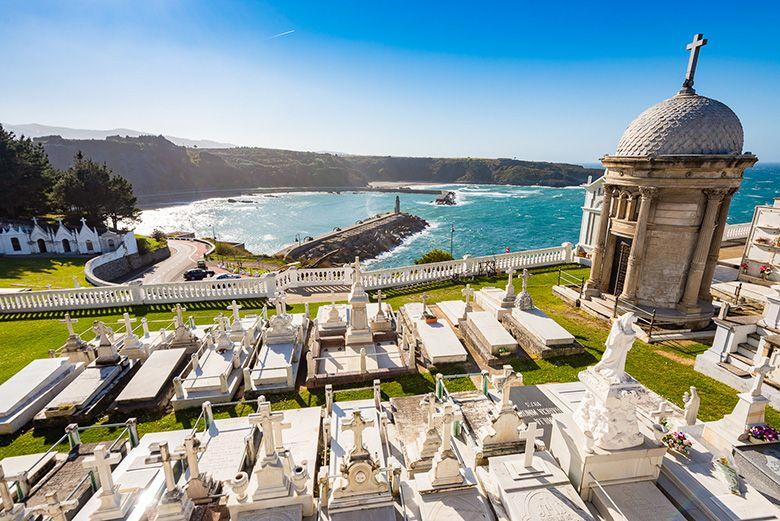
7 bridges and a legend
Through the very heart of the town flows the river Negro, which gives rise to seven bridges, giving Luarca/Ḷḷuarca an air of pure romanticism from centuries gone by.
One of the most beautiful bridges, located in the vicinity of La Pescadería, the fishermen's quarter on the western slope of the white village, has a deeply moving legend.
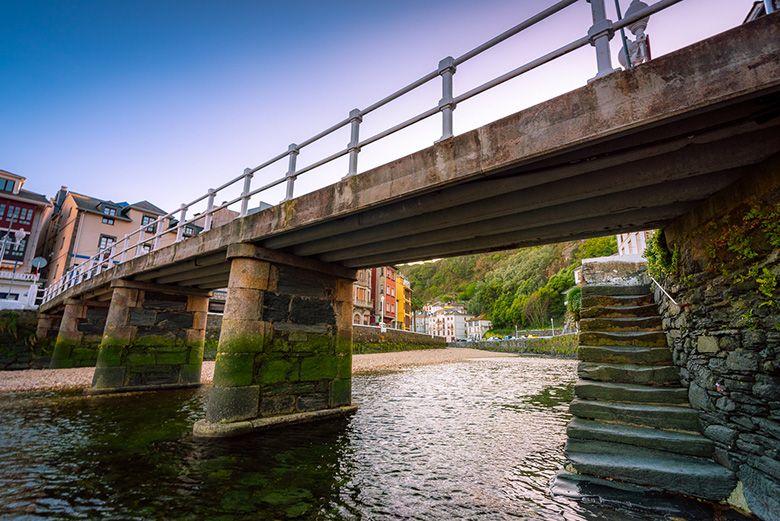
In the history of the Kissing Bridge, epic and literary elements are mixed in, as echoes of the most genuine poetics of the sea: popular memory sings that during the Middle Ages the sea was ravaged by fearsome pirates. One of the most famous of the time was the mythical Cambaral, known for his expertise in raiding and his iron hand in torture. One fine day the governor of Luarca/Ḷḷuarca seriously wounded Cambaral. It was then that the governor's daughter asked her father to let her look after the wounded pirate in the palace. As it turned out, Cambaral fell madly in love with the beautiful young woman, who in turn fell in love with the corsair. They decided to flee together, and at their planned escape rendezvous, they kissed passionately. They were unexpectedly surprised by the governor, who, enraged, decapitated them with his sword. Their bodies remained embraced and their heads rolled into the sea... That is why they say that on nights where the moon shines, in Luarca/Ḷḷuarca you can hear words of love coming from the sea...
The village that gave birth to a Nobel Prize in Medicine
Literally, Luarca/Ḷḷuarca is a Nobel village, and its streets and squares, its promenades, its watchtowers, its neighbourhoods, its palaces, and in short, many of its corners keep memories and anecdotes of that boy called Severo Ochoa who one day would become Nobel Prize in Medicine, reaching the great milestone of marking the beginning of a new era in human genomics.
A tourist route through the Luarca/Ḷḷuarca of Severo Ochoa will take you to different places in the white village such as his birthplace, the Palace of the Marquises of Ferrera, and of course the cemetery, where the illustrious scientist from Luarca is buried next to his wife Carmen Cobián, without forgetting the family home of Villar and the beach of Portizuelo, where little Severo began to feel the curiosity for the origin of life.
You can also see the house where he was born in the historic centre of the town, right next to the square that, as a tribute to his countrymen, bears his name.
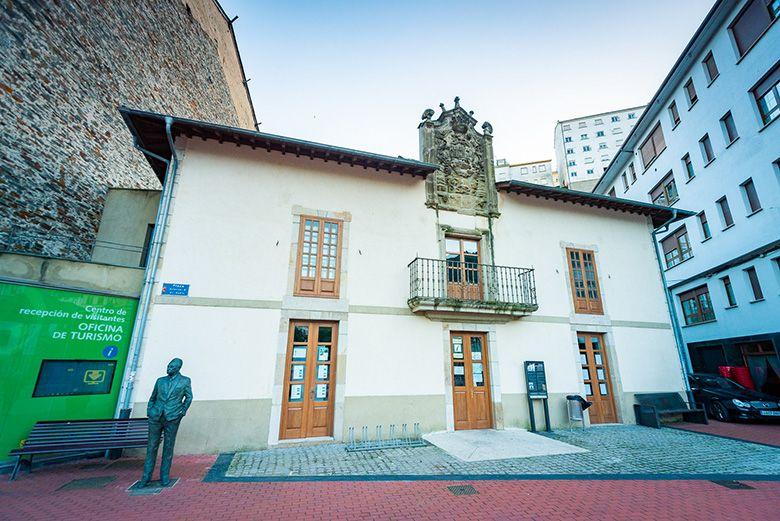
And if you feel like having your photograph taken next to him, you can contemplate the statue that has been unveiled in honour of his most illustrious son in the historic centre of Luarca.
The viewpoint of El Chano, the most spectacular view over Luarca/Ḷḷuarca
Of all the fishing villages in Asturias, Luarca/Ḷḷuarca is the only one that is flanked by two hermitages, the Blanca in the east and the San Roque hermitage in the west. If you are in the centre of the town, you can go up through the neighbourhood of La Pescadería to the latter, and once there you will have the most complete and unusual panoramic view over Luarca/Ḷḷuarca.
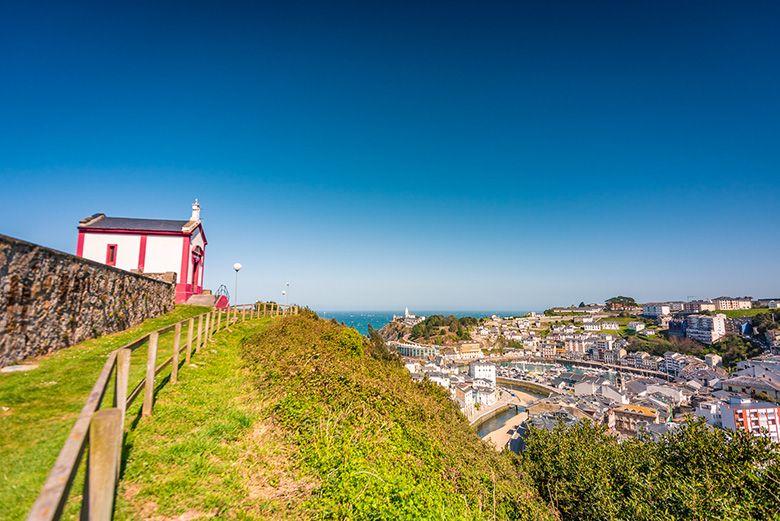
From the viewpoint of El Chano, which is at the foot of the hermitage of San Roque, your gaze will be 'hooked' by so much beauty: the beaches of Luarca/Ḷḷuarca, the port, the black river with all its bridges crossing the heart of the town, and opposite the hermitage of La Blanca, the cemetery and the lighthouse.
You can also take the opportunity to stroll through the neighbourhood of El Chano, with its typical farmhouses and hórreos (raised granaries), and its views of the sea. And you may come across some pilgrims on their way to Santiago de Compostela, who, on their way through Luarca/Ḷḷuarca, bid farewell to the Villa Blanca, leaving through El Chano in the direction of Navia.
The Fonte Baixa Gardens: Europe's largest private botanical garden on the shores of the Bay of Biscay
In El Chano you will also discover one of the great hidden treasures of Luarca/Ḷḷuarca. These are the increasingly popular Jardines de la Fonte Baixa. The history of the gardens is so curious that in a few years it may become a legend like that of the Kissing Bridge. And the fact is that these gardens were born of a great love story: that of the Marquis of San Nicolás de Noras, José Rivera y Larraya, who one day appeared in Luarca/Ḷḷuarca and fell literally and absolutely in love with the place where today trees, bushes and plants from all over the world live together, some of them with incredible stories as if they were part of a fantastic fairy tale.
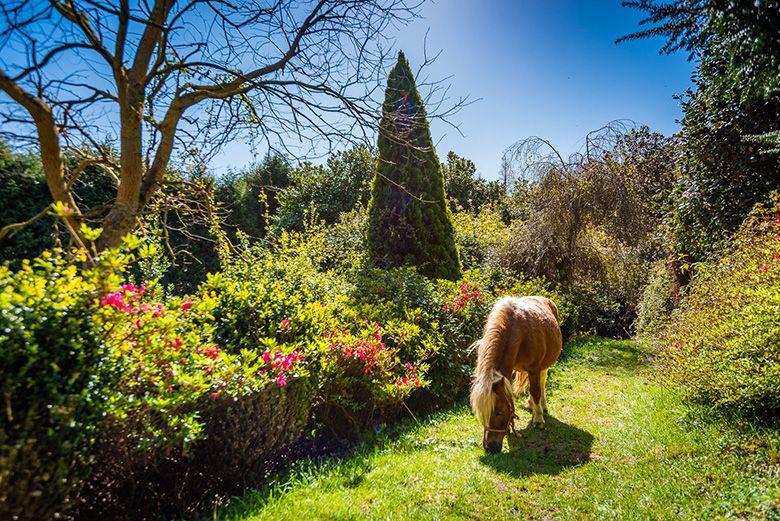
More than 20 hectares, extending over a spectacular valley, which absorbs the Cantabrian winds like no other, and from which you will have wonderful views of Luarca/Ḷḷḷuarca.
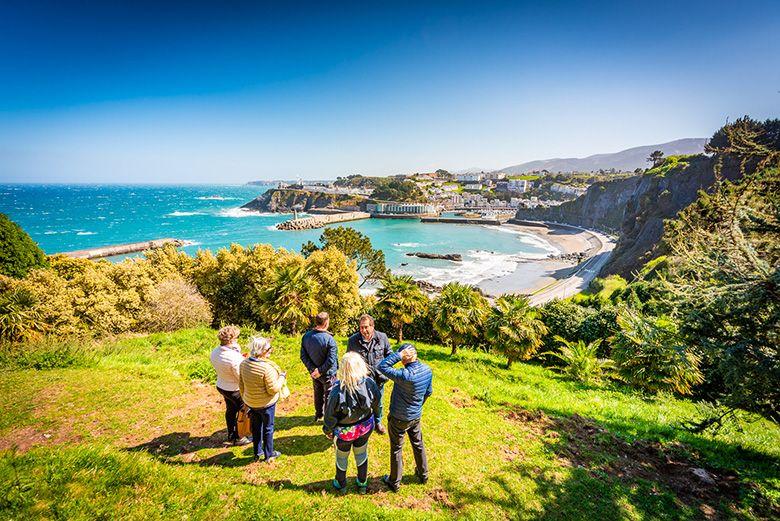
Thousands and thousands of azaleas, rhododendrons, camellias, hydrangeas.... are displayed in what is now the largest private botanical garden in Europe, where species that have never before grown outside their natural habitat do so.
As if this were not enough, the garden has pieces and antiques of great artistic value at every turn, brought from different parts of the world, mainly from Europe and Spain. Roman columns, the table where Leonardo Da Vinci dined, the door of a convent, a humble seat from rural Asturias, a figurehead, a fountain that belonged to the House of Alba and many more curiosities will surprise you on this wonderful walk through the Fonte Baixa Gardens, where you will also have an exceptional guide: José Manuel Alba from Valdes, one of the botanical masterminds behind this miracle of nature.
The best beaches to delight your senses
The council of Valdés also stands out for the beauty of its beaches. Large stretches of sand or hidden coves form a coastline that always holds unexpected surprises for you.
One of the most famous Valdés beaches is Cueva, just 7 kilometres from Luarca/Ḷḷuarca. It is an idyllic place, ideal for hippie life in the open air. Imagine a fairytale village, the mouth of a pure and crystalline river like the Esva, and an immense beach to lose yourself in baths, walks and sweet sunsets or incredible sunrises.
The river Esva offers you wild landscapes, and great natural and scenic wealth. So if, after your stay on the coast, you feel like it, you always have the option of following the Esva Gorges route. You will see incredible landscapes and villages such as San Pedro de Paredes, and with luck, some of the many otters that inhabit the river Esva.
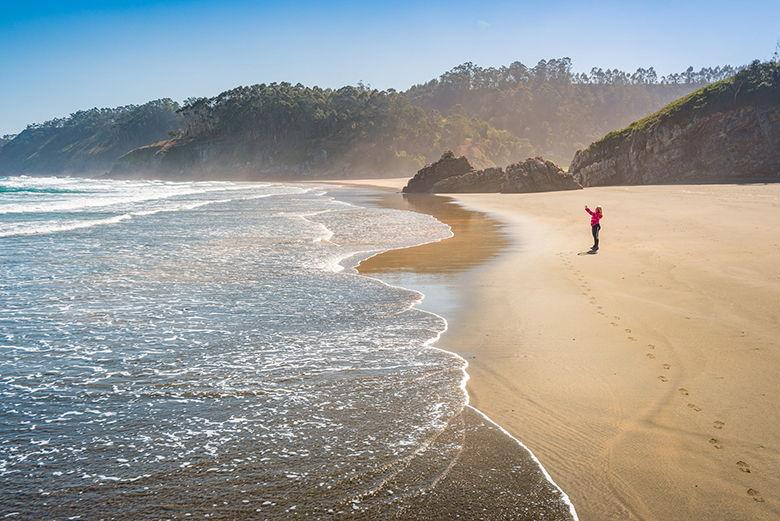
Another beach not to be missed is Otur, an imposing sandy area with rocky and very green landscapes, whose waves delight the best surfers and all those who want to take their first steps in the practice of this sport.
Planeta Barayo, the kingdom of dunes and marshes
Barayo is much more than a beach. The panoramic view from the green area of the car park does not do it justice. That is why it is essential that you walk through this Nature Reserve from end to end, walking between marshes and enormous dunes, to reach the coastline, in the form of an immense sandy area where the best waves and the strongest winds are to be found.
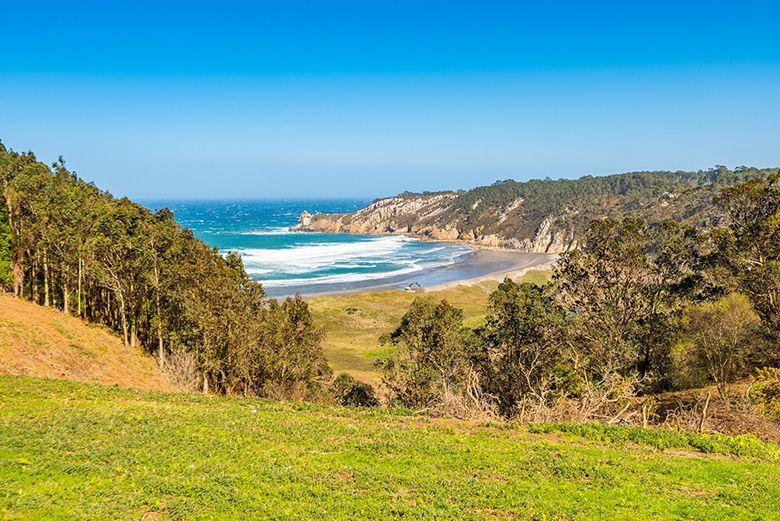
This protected landscape on the western coast of Asturias is the natural border between the councils of Valdés and Navia, and is the place chosen by the river Barayo to flow into the sea. Forests, scrubland, cliffs, bridges and abandoned constructions... A different place, where if you are a fan of flora and fauna, you will find unique species, and where you will feel like you are in the middle of a peaceful jungle. In addition, the sand of Barayo is one of the finest in Asturias, which is a great pleasure when sunbathing and swimming in the sea.
The truth is that the short walk through this Nature Reserve is a perfect excursion to enjoy the extraordinary landscapes offered by the Asturian coast in the council of Valdés.
The Park of Life, a unique space for scientific dissemination
Very close to Luarca/Ḷḷuarca, you will find the Parque de la Vida, a space for scientific dissemination about life in its many facets, which will surprise you. Suddenly you don't know if you're on planet Earth, or if you've embarked on a space journey. And as soon you are gazing at the sky as you are diving in the oceans and travelling to the abyssal depths.
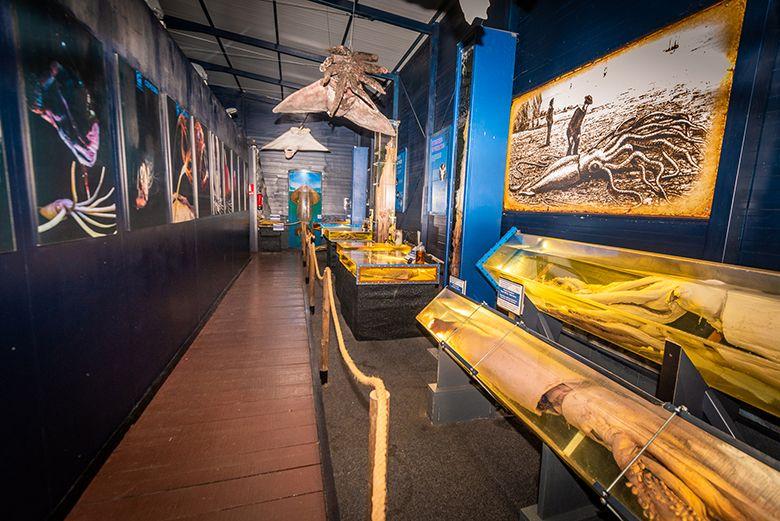
You will travel through all the Ages of the Earth and get a glimpse of the very origin of life. You will become aware of the importance of the recovery of fauna and flora, and of the need to pamper the ecosystem and make it energetically sustainable.
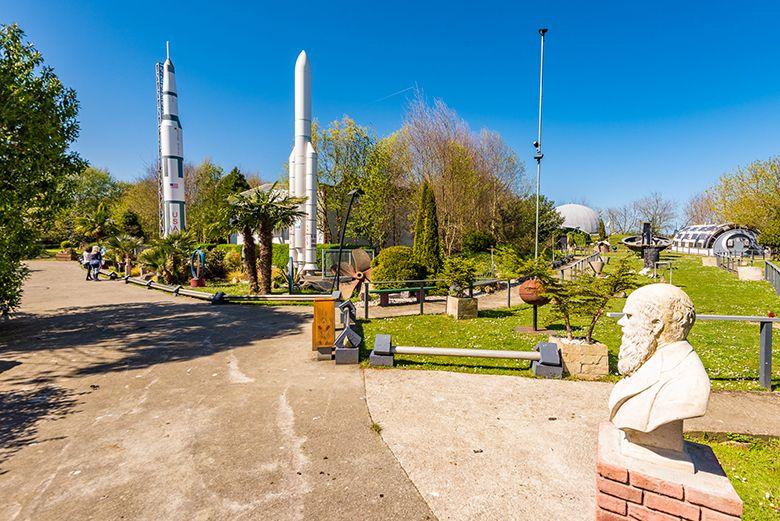
Walking among the legacy of Darwin and Severo Ochoa, you will feel an immense peace in the midst of a nature that will have fewer and fewer secrets for you. There are many activities and educational workshops in this space, some of them even dedicated to snake handling.
When you leave the Parque de la Vida, you will feel as if you have travelled to the centre of the Earth and to the Galaxies at the same time, and if you are lucky enough to have been guided by Luis Laria, the genius creator of this Park, you won't even know what to expect.
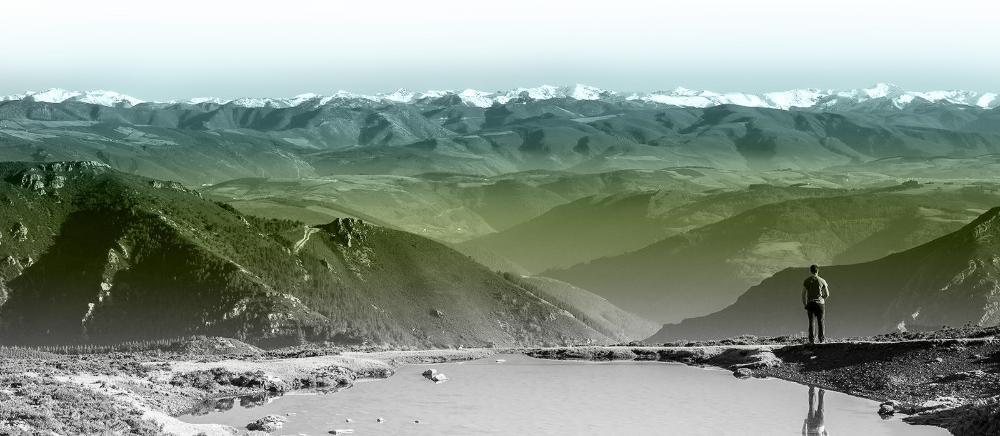
Subscribe to our newsletter and take advantage of offers, discounts, and news
Subscribe


